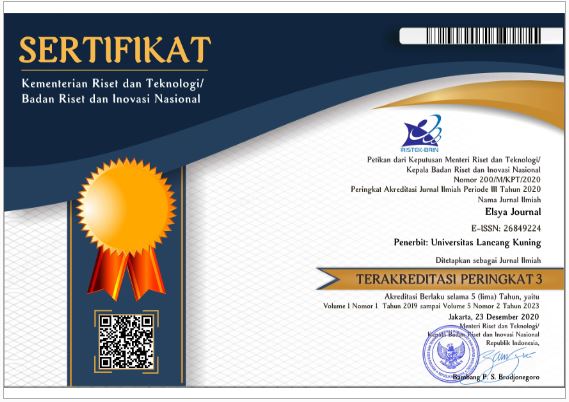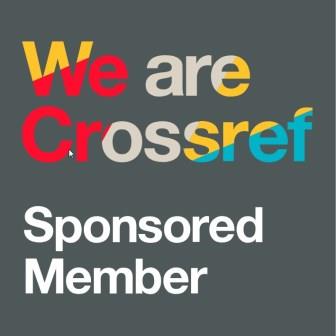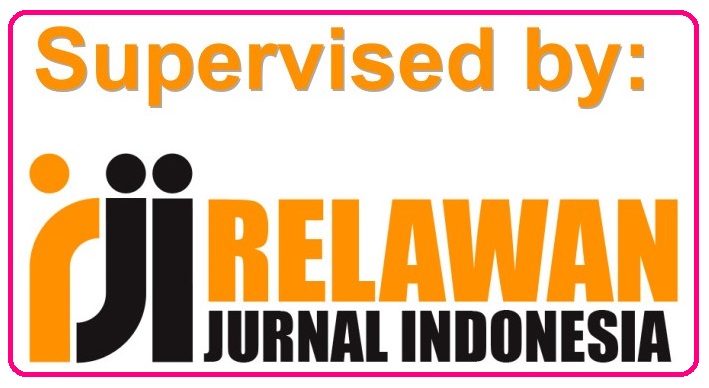English Pronunciation by Korean EFL Learners on Hilokal Language Educational Application
Abstract
English is being learned for several purposes by people globally embody some different accents; therefore, this study analyse the English pronunciation by Korean learners on English learning application classes since Korea is still having lack of perfect English standard pronunciation with its identity of developed industry country. Consequently, this study aims to investigates Korean-English phenomenon on Hilokal application as most English learners there by comparing the differences between original English sounds and Korean using descriptive qualitative from the audio recordings has been collected. The result shows that all 7 Korean learners (age range of 20-35) still produce some different sounds from the standard English ones noted as International Phonetic Alphabet (IPA) because of the differences in the writing systems of the two languages and the alphabet of Korean itself. There are five places of articulations: labiodental, alveolar, post-alveolar, bilabial, and palatal seized from some processes such as replacement, addition, and omission in producing the word sounds. Furthermore, the dominant difference in sounds is in sound addition /ə/ or /ɪ/ with 27 items and 17 items from loan words. The implications of this study are fresh data focus on phonology analysis and can be useful in English teaching practice for foreign languages in order to have close resemblance English pronunciation to have more intelligibility with the standard patented.
Downloads
References
daykorean. (2022). Konglish – Complete list of Korean loanwords for 2022. 90daykorean.Com. https://www.90daykorean.com/konglish/
Ahn, H. (2014). Teachers’ attitudes towards Korean English in South Korea. World Englishes, 33(2), 195–222. https://doi.org/10.1111/weng.12081
Ahn, Y. Y. (2020). An Examination of Translingual Practices on a Mobile Application. International Journal of Literacy, Culture, and Language Education, 1(December), 54–72. https://doi.org/10.14434/ijlcle.v1i0.30461
Al-Jarf, R. (2021). Arabic and English Loan Words in Bahasa: Implications for Foreign Language Pedagogy. Journal La Edusci, 2(4), 23–35. https://doi.org/10.37899/journallaedusci.v2i4.445
Al-Zoubi, D. S. M. (2019). The Speech Sounds of Arabic Language and their Effect on Learning English Pronunciation : A Contrastive Analysis. International Journal of Humanities and Social Science, 9(1), 15–27. https://doi.org/10.30845/ijhss.v9n1p2
Allwood, J. (1985). Intercultural Communication. University of Göteborg, Dept of Linguistics. https://citeseerx.ist.psu.edu/viewdoc/download?doi=10.1.1.63.5067&rep=rep1&type=pdf
Alshalaan, K. (2020). A Comparison between English and Arabic Sound Systems Regarding Places of Articulation. Open Access Library Journal, 7(5), 1–7. https://doi.org/10.4236/oalib.1105679
Amna, S., & Christina, D. (2021). A Need Analysis for English Speaking and Listening Assessment Media with Web Responsive in Computer Science Faculty. Jurnal Arbitrer, 8(2), 148. https://doi.org/10.25077/ar.8.2.148-156.2021
Asante, E., Oppong-Adjei, B., Adjei, P. Y., & Okrah, E. K. (2022). Uniqueness of Ghanaian English Pronunciation: Analysis of Dental Fricative Sounds. European Journal of Literature, Language and Linguistics Studies, 5(4), 114–132. https://doi.org/10.46827/ejlll.v5i4.331
Bashori, M., Hout, R. van, Strik, H., & Cucchiarini, C. (2020). Web-based language learning and speaking anxiety. Taylor & Francis, 35(5–6), 1058–1089. https://doi.org/10.1080/09588221.2020.1770293
Cahyaningrum, A. (2021). Mood Types in Education and Health Campaign Millenasia Project Video “Be the Future” by UNESCO. LEXEME: Journal of Linguistics and Applied Linguistics, 3(2), 80–86. https://doi.org/10.32493/ljlal.v3i2.17908
Cahyaningrum, A. (2022). A Diphthong Pronunciation Analysis Uttered by EFL Students in Microteaching Class Practice. STRUKTURAL (Seminar on Translation, Applied Linguistics, Literature, and Cultural Studies), 3(1), 136-142. https://doi.org/10.33633/str.v3i1.7415
Carr, P. (1993). Modern Linguitics: Phonology. In Handbook of Cognitive Linguistics (Vol. 39). The Macmillan Press Ltd. https://doi.org/10.9783/9781512808957-004
Cho, I. (2001). Recognition of English loanwords by learners of Korean. Sixth Annual Conference and Teacher Training Workshop on the Teaching of Korean Language, Culture, and Literature, 69–74. https://www.jstor.org/stable/42922771
Choi, S. J., & Sim, H. S. (2019). Grapheme-Phoneme Conversion in Korean Word Recognition: Evidence from Event-Related Potentials. Commun Sci Disord, 24(3), 647–655. https://doi.org/10.12963/csd.19644
Crystal, D. (2003). English as a global language (2nd ed.). Cambridge: Cambridge University Press. https://doi.org/10.1017/CBO9780511486999
Demİrezen, M. (2022). How to Teach the / ð / Phoneme to Indonesian and Turkish English Majors : First Application. Futuristic Implementations of Research in Education (FIRE), 3(1), 2–16. http://firejournal.org/index.php/fire/article/view/67/
Fayzrakhmanova, Y. (2016). Koreanized english words from perspectives of Korean-English language contact. Asian Englishes, 18(3), 216–231. https://doi.org/10.1080/13488678.2016.1225483
Forrest. (2022). How Speaking Korean Affects Your English. GO! Billy Korean. https://youtu.be/3E3HIBB3CKE
Fromkin, V., Rodman, R., & Hyams, N. (2011). An Introduction to Language (9th ed.). Wadsworth Cengange Learning.
Gil, Y. hyung. (2021, July 5). UNCTAD classifies S. Korea as developed economy. Hani.Co.Kr. https://english.hani.co.kr/arti/english_edition/e_international/1002230.html#:~:text=The UN Conference on Trade,since its establishment in 1964.
Golonka, E. M., Bowles, A. R., Frank, V. M., Richardson, D. L., & Freynik, S. (2014). Technologies for foreign language learning: A review of technology types and their effectiveness. Computer Assisted Language Learning, 27(1), 70–105. https://doi.org/10.1080/09588221.2012.700315
Halimah, A. N. (2019). Mispronunciation of English Sounds by Korean Singers in Buzzfeed Interviews. University Sanata Dharma.
Hermastuti, S. I., & Isti’anah, A. (2018). Consonant Changes in Korean Singers’ Pronunciation. Journal of Language and Literature, 18(1), 28–35. https://doi.org/10.24071/joll.2018.180104
Hilokal. (2022). Hilokal (3.0.21). hilokal. https://play.google.com/store/apps/details?id=com.hilokal
Huiwen, W. (2021). Analysis of Korean mispronunciation of the “ r .” Academic Journal of Humanities & Social Sciences, 4(4), 86–88. https://doi.org/10.25236/AJHSS.2021.040418
Isbell, D. R. (2018). Online informal language learning: Insights from a Korean learning community. Language Learning and Technology, 22(3), 82–102. https://doi.org/10125/44658
Jeong, A. (2020). Korean Diction for Singers [Indiana University]. In Molecules (Vol. 2, Issue 1). http://clik.dva.gov.au/rehabilitation-library/1-introduction-rehabilitation%0Ahttp://www.scirp.org/journal/doi.aspx?DOI=10.4236/as.2017.81005%0Ahttp://www.scirp.org/journal/PaperDownload.aspx?DOI=10.4236/as.2012.34066%0Ahttp://dx.doi.org/10.1016/j.pbi.201
Jocelin, E., & Tryana. (2019). Code Mixing and Code Switching in a Korean-Song Lyric. LEXEME: Journal of Linguistics and Applied Linguistics, 1(2), 47–52. https://doi.org/10.32493/ljlal.v1i2.5127
Kelly, G. (2000). How to Teach Pronunciation. Longman.
Khusna, F. A., & Indriani, L. (2021). Investigating the Use of Java-English Accent In The EFL Class. Musamus Journal of Language and Literature, 4(1), 23–29. https://doi.org/10.35724/mujolali.v4i1.3528
Kiaer, J., & Bordilovskaya, A. (2017). Hybrid english words in Korean and Japanese: A strange brew or an asset for global english? Asian Englishes, 19(2), 169–187. https://doi.org/10.1080/13488678.2016.1278116
Kim, E. Y. J. (2016). Anglicized Korean Neologisms of the New Millennium: An Overview. English Today, 32(3), 52–60. https://doi.org/10.1017/S0266078416000250
Kukulska-Hulme, A., & Lee, H. (2019). Mobile Collaboration for Language Learning and Cultural Learning. In M. Dressman & R. W. Sadler (Eds.), The Handbook of Informal Language Learning. John Wiley & Sons Ltd. https://doi.org/10.1002/9781119472384.ch11
Kulal, A., & Nayak, A. (2020). A study on perception of teachers and students toward online classes in Dakshina Kannada and Udupi District. Asian Association of Open Universities Journal, 15(3), 285–296. https://doi.org/10.1108/AAOUJ-07- 2020-0047
Kwon, H. (2017). Language experience, speech perception and loanword adaptation: Variable adaptation of English word-final plosives into Korean. Journal of Phonetics, 60, 1–19. https://doi.org/10.1016/j.wocn.2016.10.001
Lauer, F. (2021). The Development of English to the Global Lingua Franca. Paris College of International Education. https://pcie.ac/journals/2021/10/28/the-development-of-english-to-the-global-lingua-franca/
Lawrence, C. B. (2012). The Korean English linguistic landscape. World Englishes, 31(1), 70–92. https://doi.org/10.1111/j.1467-971X.2011.01741.x
Lee, H.-Y., & Hwang, H. (2016). Gradient of learnability in teaching English pronunciation to Korean learners. The Journal of the Acoustical Society of America, 139(4), 1859–1872. https://doi.org/10.1121/1.4945716
Lee, S. (2017). A Study of Korean Diction for Choral Conductor Using the Principles of the Korean Writing System.
Lee, Y. (2022). Sound Perception and Production of Korean EFL Learners : English Consonants. The Journal of Modern British & American Language & Literature, 40(1), 269–270. https://doi.org/10.21084/jmball.2022.02.40.1.269
Lestari, E. (2019). The Exposure of Technology to Improve Writing : Case Study of Sophomore of English Department. ELTiC Conference, 4(1), 41–48. http://eproceedings.umpwr.ac.id/index.php/eltic/article/view/1106
Mazharul Islam, S. (2020). Segmental Errors in English Pronunciation of Nonnative English Speakers. Journal of Education and Social Sciences, 16(1), 14–24. https://www.jesoc.com/wp-content/uploads/2020/12/JESOC16-011.pdf
Mufwene, S. S. (2010). Lingua Franca. In Encyclopedia Britannica. Britannica. https://www.britannica.com/topic/lingua-franca
Muhassin, M., Ansar, F. A., & Putri, P. P. (2018). Phonological Interference of Madurese Towards English at The Eleventh Students of Sma Al Hikam Bangkalan East Java. Jurnal Tadris Bahasa Inggris, 11(2), 144–159. http://ejournal.radenintan.ac.id/index.php/ENGEDU/article/view/3493/3254
Nassaji, H. (2015). Qualitative and descriptive research: Data type versus data analysis. In Language Teaching Research. https://doi.org/10.1177/1362168815572747
Nazir, M. (2005). Metode penelitian (3rd ed.). Ghalia Indonesia. http://katalogdpkprovntb.perpusnas.go.id/detail-opac?id=4654
Nemati, F., Ahmadian, M., & Abbasi, A. (2020). The Differential Impact of Linguistic Experience on the Discrimination and Categorization of Non-Native Sounds in Foreign Language Learners. Grazer Linguistische Studien, 92(Herbst), 21–43. https://doi.org/10.25364/04.47
Nugraha, A. (2021, December). Case study: Redesign of a language exchange app for target accuracy improvement. Bootcamp. https://bootcamp.uxdesign.cc/ui-ux-case-study-redesign-of-the-language-learning-app-hilokal-for-target-accuracy-improvement-c8a2cf5f635c
Nurlaili, & Susanti, A. (2019). Javenese students’ problems in pronouncing english consonants during reading aloud activity. BAHASTRA, 39(2), 110–119. https://doi.org/10.26555/bahastra.v39i2.14662
Oyinloye, C. A., Fatimayin, F., Osikomaiya, M. O., & Fatola, O. L. (2020). Phonological Perversion as Detriment to Effective Use of Spoken English among Secondary School English Teachers in Non-Native Context. Frontiers in Education Technology, 3(3), 24–37. https://doi.org/10.22158/fet.v3n3p24
Park, K.-J. (2009). Characteristics of Korea English as a Glocalized Variety. In K. Murata & J. Jenkins (Eds.), Springer (pp. 94–97). Springer. https://link.springer.com/chapter/10.1057/9780230239531_7
Prayudi, R. A., Hakiki, A. K., Putra, N. R. D., Anzka, T. O., & Ihsan, M. T. (2021). the Use of Technology in English Teaching & Learning Process. Jurnal Riset Dan Inovasi Pembelajaran, 1(2), 102–111. https://doi.org/10.51574/jrip.v1i2.38
Rabiah, S. (2018). Language as a Tool for Communication and Cultural Reality Discloser. 1–11. https://doi.org/10.31227/osf.io/nw94m
Roach, P. (2009). English Phonetics and Phonology (4th ed.). Cambridge University Press.
Rosario, A., Rivera, I., & Namanya, S. J. (2018). Teaching and Assessing Language Skills Online. The Journal of Adventist Education, 80(2), 901–912. http://jae.adventist.org
Roztocki, N., Soja, P., & Weistroffer, H. R. (2019). The role of information and communication technologies in socioeconomic development: towards a multi-dimensional framework. Taylor & Francis, 25(2), 171–183. https://doi.org/10.1080/02681102.2019.1596654
Rüdiger, S. (2018). Mixed Feelings: Attitudes towards English loanwords and their use in South Korea. Open Linguistics, 4(1), 184–198. https://doi.org/10.1515/opli-2018-0010
Sayogie, F., & Adbaka, M. F. (2022). Interlingual Errors in Indonesian EFL learners’ Pronunciation: From Minimal Pairs to Speaking Ability. Elsya : Journal of English Language Studies, 4(2), 131–146. https://doi.org/10.31849/elsya.v4i2.9693
Sohn, H.-M. (1999). The Korean Language. Cambridge University Press.
Song, J. J. (2005). The Korean Language Structure, Use and Context (1st ed.). Routledge.
Soto-Corominas, A., Rosa, J. D. la, & Suárez, J. L. (2018). What Loanwords Tell Us about Spanish (and Spain). Digital Studies/Le Champ Numérique, 8(1), 4. https://doi.org/10.16995/dscn.297
Steber, S., & Rossi, S. (2021). The challenge of learning a new language in adulthood: Evidence from a multi-methodological neuroscientific approach. PLoS ONE, 16(2 February 2021), 1–23. https://doi.org/10.1371/journal.pone.0246421
Syahabuddin, K., Mulia, & Rizqa, K. (2021). Improving Students’ Listening Skill Using Podcast. Journal of Digital Education, Communication, and Arts, 4(1), 51–61. https://doi.org/10.30871/deca.v4i01.2867
Tirtayasa, C. T. (2019). Schwa Insertion by Korean Speakers in Andersen’s The Little Match. Universitas Sanata Dharma.
Tosuncuoglu, I. (2017). Non-Native & Native English Teachers. Journal of History Culture and Art Research, 6(6), 634–638. https://doi.org/10.7596/taksad.v6i6.573
Wahyuni, N., & Afrianti, I. (2021). The Contribution of Speaking Practice with the Native Speaker to Student’s Speaking Ability in Junior High School. Ainara Journal (Jurnal Penelitian Dan PKM Bidang Ilmu Pendidikan), 2(3), 247–252. https://doi.org/10.54371/ainj.v2i3.88
Wheelock, A. (2016). Phonological difficulties encountered by Italian learners of English: An error analysis. Hawaii Pacific University TESOL Working Paper Series, 14, 41–61. https://www.hpu.edu/research-publications/tesol-working-papers/2016/04AnneWheelock.pdf
Wijaya, L., & Nasution, N. S. S. (2018). Language as Art And Communication Tool. Proceeding of the 1th Annual International Confernce on Language and Literature, 69–74. https://doi.org/10.30743/aicll.v1i1.10
Woodworth, D. (2022). What can I use to learn Korean for free? Quora. https://www.quora.com/profile/David-Woodworth-2
Xiao, X. (2021). The Study of Loanwords in English. Journal of Contemporary Educational Research, 4(12), 36–43. https://doi.org/10.26689/jcer.v4i12.1695
- Author retains the copyright and grants Elsya Journal the right of first publication of the work simultaneously licensed under the Creative Commons Attribution-ShareAlike 4.0 License that allows others to share the work with an acknowledgment of the work's authorship and initial publication in this journal
- The author is able to enter into separate, additional contractual arrangements for the non-exclusive distribution of the journal's published version of the work (e.g., post it to an institutional repository or publish it in a book) with the acknowledgment of its initial publication in this journal.
- The author is permitted and encouraged to post his/her work online (e.g., in institutional repositories or on their website) prior to and during the submission process, as it can lead to productive exchanges, as well as earlier and greater citation of the published work (See The Effect of Open Access).









 Elsya Journal is licensed under
Elsya Journal is licensed under 